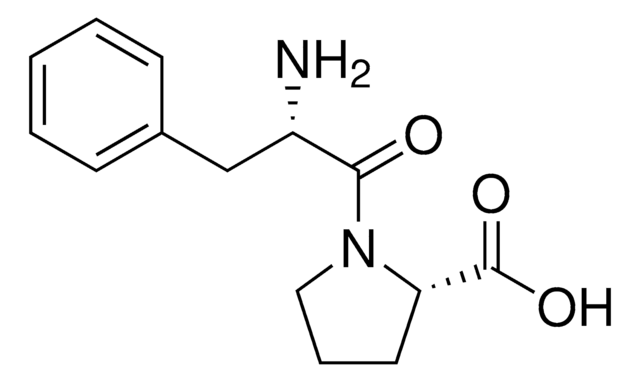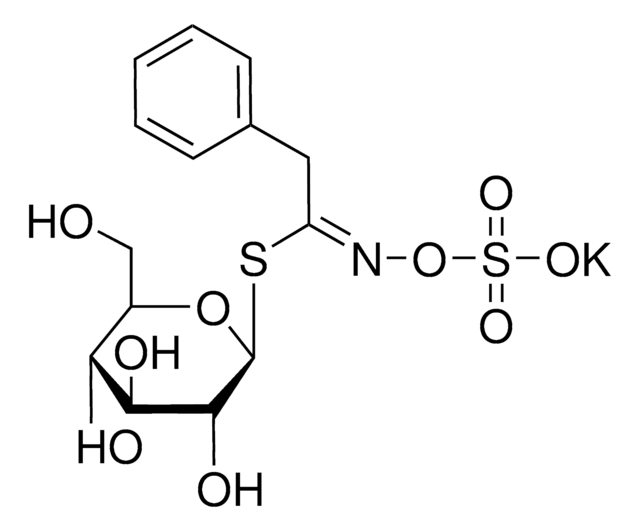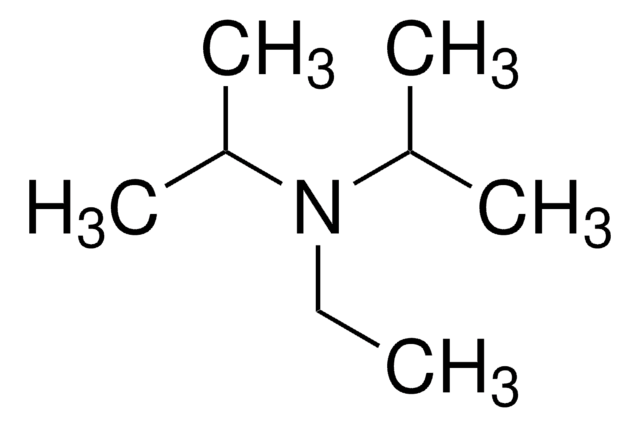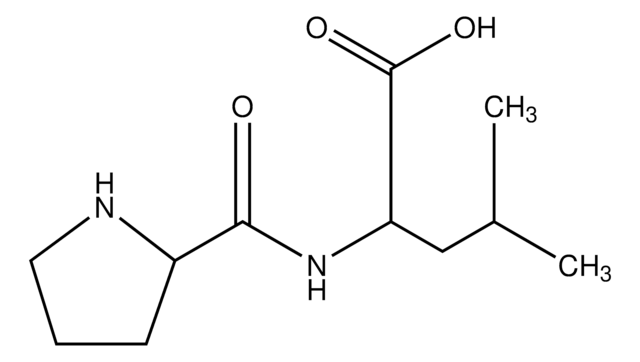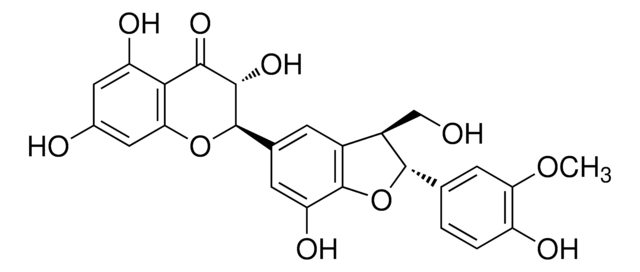SMB01340
Isoleucyl-Phenylalanine
Synonym(s):
L-Isoleucyl-L-phenylalanine, Ile-Phe, Isoleucylphenylalanine
Sign Into View Organizational & Contract Pricing
All Photos(1)
About This Item
Empirical Formula (Hill Notation):
C15H22N2O3
CAS Number:
Molecular Weight:
278.35
MDL number:
UNSPSC Code:
12352209
NACRES:
NA.26
Recommended Products
Assay
≥95% (HPLC)
Quality Level
form
solid
storage temp.
2-8°C
SMILES string
CC[C@H](C)[C@H](N)C(N[C@@H](CC1=CC=CC=C1)C(O)=O)=O
InChI key
WMDZARSFSMZOQO-DRZSPHRISA-N
General description
Isoleucyl-Phenylalanine is a dipeptide derived from the incomplete breakdown of protein digestion or protein catabolism. It has not yet been identified in human tissues or biofluids and so it is classified as an ′Expected′ metabolite.
Application
Isoleucyl-Phenylalanine can be used in biochemical and metabolomics research applications
Features and Benefits
- Suitable for Metabolomics and Biochemical research
- High-quality compound suitable for multiple research applications
Other Notes
For additional information on our range of Biochemicals, please complete this form.
Storage Class Code
11 - Combustible Solids
WGK
WGK 3
Flash Point(F)
Not applicable
Flash Point(C)
Not applicable
Regulatory Information
新产品
Choose from one of the most recent versions:
Certificates of Analysis (COA)
Lot/Batch Number
Don't see the Right Version?
If you require a particular version, you can look up a specific certificate by the Lot or Batch number.
Already Own This Product?
Find documentation for the products that you have recently purchased in the Document Library.
Rashmi Sinha et al.
PloS one, 11(3), e0152126-e0152126 (2016-03-26)
Investigation of microbe-metabolite relationships in the gut is needed to understand and potentially reduce colorectal cancer (CRC) risk. Microbiota and metabolomics profiling were performed on lyophilized feces from 42 CRC cases and 89 matched controls. Multivariable logistic regression was used
Dustin G Brown et al.
Cancer & metabolism, 4, 11-11 (2016-06-09)
Colorectal cancers (CRC) are associated with perturbations in cellular amino acids, nucleotides, pentose-phosphate pathway carbohydrates, and glycolytic, gluconeogenic, and tricarboxylic acid intermediates. A non-targeted global metabolome approach was utilized for exploring human CRC, adjacent mucosa, and stool. In this pilot
James J Goedert et al.
Carcinogenesis, 35(9), 2089-2096 (2014-07-20)
Metabolomic analysis of feces may provide insights on colorectal cancer (CRC) if assay performance is satisfactory. In lyophilized feces from 48 CRC cases, 102 matched controls, and 48 masked quality control specimens, 1043 small molecules were detected with a commercial
Our team of scientists has experience in all areas of research including Life Science, Material Science, Chemical Synthesis, Chromatography, Analytical and many others.
Contact Technical Service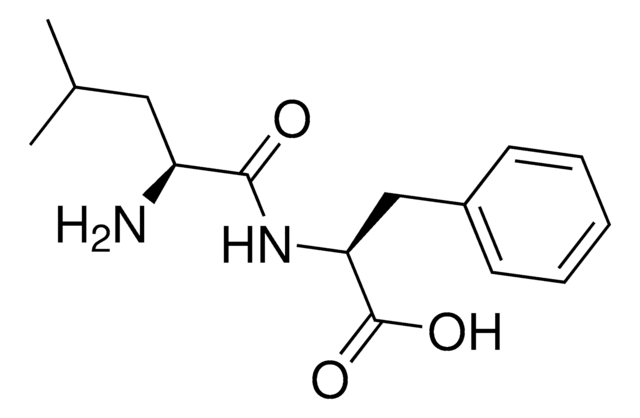
![4-[4-(Dimethylamino)phenylazo]benzoic acid N-succinimidyl ester ≥98.0% (HPLC)](/deepweb/assets/sigmaaldrich/product/structures/120/235/500b5276-3ce2-43b7-9588-3883f13d4ff7/640/500b5276-3ce2-43b7-9588-3883f13d4ff7.png)
